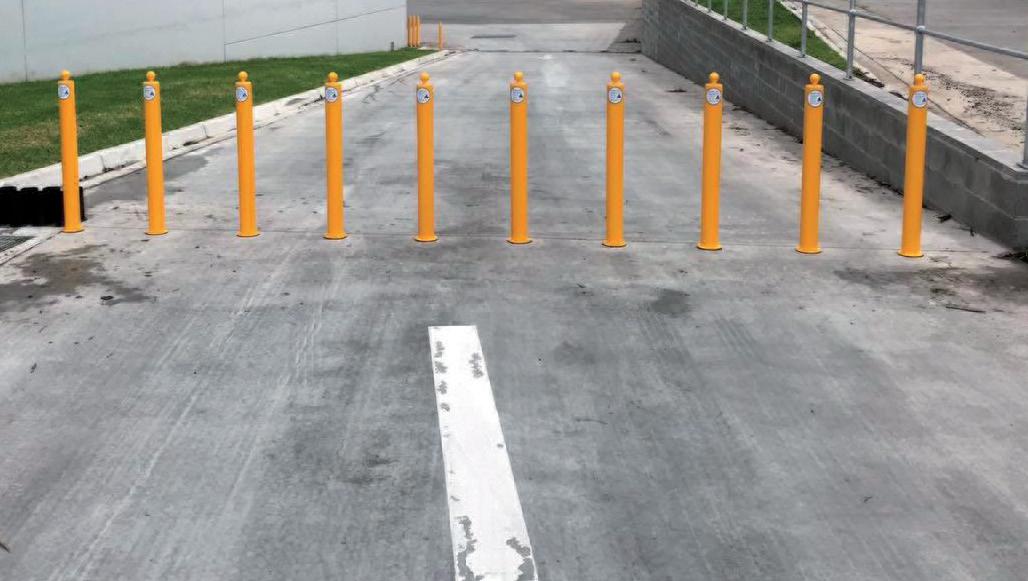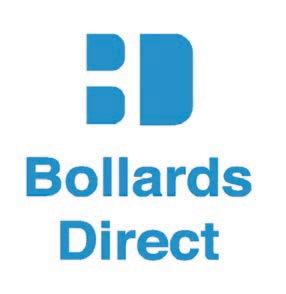
6 minute read
Energy Chains
Powering cranes with energy chains
Treotham Automation’s national sales manager, John Sharp, explains why energy chains are the best option for harnessing the power required in heavy duty industrial machines such as cranes.
igus has introduced their new heavy-duty energy chains.
THE new generations of shipto-shore cranes continue to demand more from their energy supply systems as the need for greater speed and reliability is amplified. igus, a manufacturer and supplier of a wide range of motion products such as cables, bearings and automation technology, has now introduced their heavy-duty energy chains in response to this need.
According to igus partner, Treotham Automation, energy chains are used to carry and guide power to moving parts of machines or structures with the power coming from electrical, hydraulic, or pneumatic sources.
“An energy chain is an engineered plastic chain with integrated rollers built into the sides of the link and you put the cables in that and it drags it backwards and forwards along with the trolley,” Treotham Automation national sales manager John Sharp said.
In comparison to more traditional energy supply systems that are used in cranes, such as festoon systems, energy chains have become a more reliable and efficient option for crane operations.
“Many cranes come with this festoon system, which is basically a collection of cables which are hung from little skateboards, if you like, in loops,” Sharp said. “When the crane trolley moves, it drags the skateboards along and carries the cables. The cables pull the first trolley and then the sets behind get pulled along. However, the motion of all those cables is not synchronous with the motion of the trolley, and that causes a lot of problems such as wear and tear.
“But with a chain, as soon as the trolley moves, the chain moves so that the motion of the cables is synchronous with the trolley. That alone makes a big improvement in the wear and tear on all the components, because it doesn’t have the shock loadings of going from zero to speed.”
Sharp describes the igus energy chain itself as a plastic compound reinforced with glass fibre nylons, with rollers built into the links to ensure the chain both slides and rolls. This creates very low wear compared with festoon systems.
“We have a plastic chain where you put the cables inside it, you attach one end to the fixed part of the machine at the other end of the trolley,” Sharp said. “It’s a system, so it’s not just the chain alone – we have a guide trough which is a critical element of the system and holds the chain at a straight level, parallel to the trolley motion, which allows the chain to follow the trolley.”
With the igus range of energy chains, no two systems are identical because no two machines have the exact same cable package. The products are mass customisable, ensuring that they suit any crane operator’s needs in relation to size, the travel length of the machine, speed, and acceleration.
“From day one, we select the chain which is going to be strong enough to carry the push and pull of the motion,” Sharp said. “As far as detailing the rest of the chain, that’s really individual. This creates two selection criteria: one is choosing the right series of products for the job, the other is tailoring the accessories inside the chain to suit your cable package.”
The igus energy chains have opened the market due to their longer service life. This has been facilitated in several ways – for example, wind does not degrade the cables over time as it would with a festoon system, Sharp explains.
“The servicing needed is quite minor for the energy chains,” he said. “There are some ports in Australia that are quite exposed to wind. An interesting thing with a festoon is that even when the machine is off, the cable is still working because the wind is moving it. However, the issue is that the wind is degrading the cables and can actually blow the cable up onto the skateboard, eventually breaking the cable. So, the cable is suffering from wear and its lifespan is ticking the whole time because it’s moving the whole time. It’s also quite a big job to change that out, whereas with the chains the cables only move when the shuttle moves.
“The other interesting point is when you have a festoon, you have a loop, so all the bending is done at the bottom of the loop. The loop moves up and then it bends in the same spot; whereas with the chain, you’re putting that bend along its entire length. So, there’s a few fundamental things which make it live longer.”
In turn, a longer service life for the energy chains means that maintenance is simplified overall – a huge benefit for the long-term costs
Energy Chains
associated with the upkeep of an expensive, hard-working machine like a crane. Sharp has been witness to this on many occasions.
“I’ve been working in this sphere for 25 years and used to call on P&O Ports back in the day and they’d say, ‘No, no, we don’t use chains, there’s too many individual components – how can that be more reliable?’” Sharp said. “But over time, we’ve seen the market swing because once they get the energy chains in at one terminal, they realise that they have way less maintenance issues and that at the end of the day, they’re saving money.”
Another benefit of incorporating an energy chain into a modern crane impacts the crane manufacturer as well, as it takes up less space on the machine itself. A traditional festoon system would need the additional infrastructure to park the skateboards at the back reach of the crane; an energy chain eliminates the extra steel required to build this, along with the added cost.
The next generation of energy chains is anticipated to bring further benefits with the introduction of predictable maintenance. According to Sharp, this feature will embed wireless sensors into the plastics to provide real-time data, remotely.
“The next step for igus is predictable maintenance, where sensors in the chain can give you real-time data on wear to prevent a shutdown or unplanned failure,” he said.
Energy chains, such as those supplied by igus through Treotham Automation, have transformed the way cranes operate by introducing a simple, reliable, cost-effective and more efficient system.
“I think that port operators have realised that the faster they can move a container, the more they can move. The more they can move, the more money they make and the more ships they can unload,” Sharp said. “Over time, they have tried to make these cranes go faster and faster and found that the festoon system started to become quite complicated. You couldn’t just have a skateboard getting pulled along, you actually have to have a motor and a drive wheel. Once you start to do this, you have a very complicated system that is difficult to maintain and has unexplained stoppages and faults.
“The evolution was that if you want the machine to go fast, cheaply, a chain is a much better option.”
Energy chains are used to carry and guide power to the moving parts of machines.
For more information about Treotham Automation’s stock of energy chains, visit www.treotham.com.au.


Protecting What’s Valuable To You

Australian Made Bollards. Manufactured to the highest quality to protect what’s valuable to you.
• Bollards designed to protect your Business, Property and Assets. • Stop Unauthorised access • Preventing vehicles smashing into your premises, protecting Staff and Assets • Suits all types of applications

Call us now for a quote and 10% discount on your order
Ron Parker - 0413 606 456 E: info@bollardsdirect.net.au www.bollardsdirect.net.au










